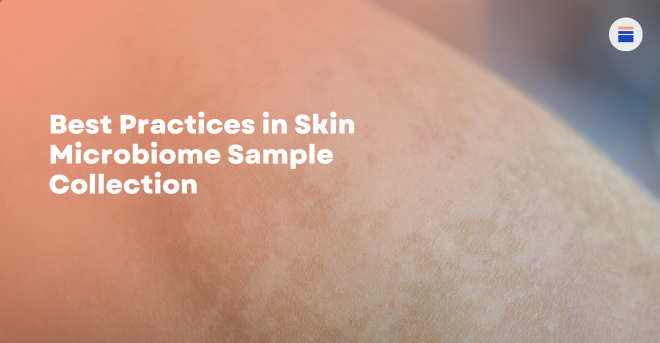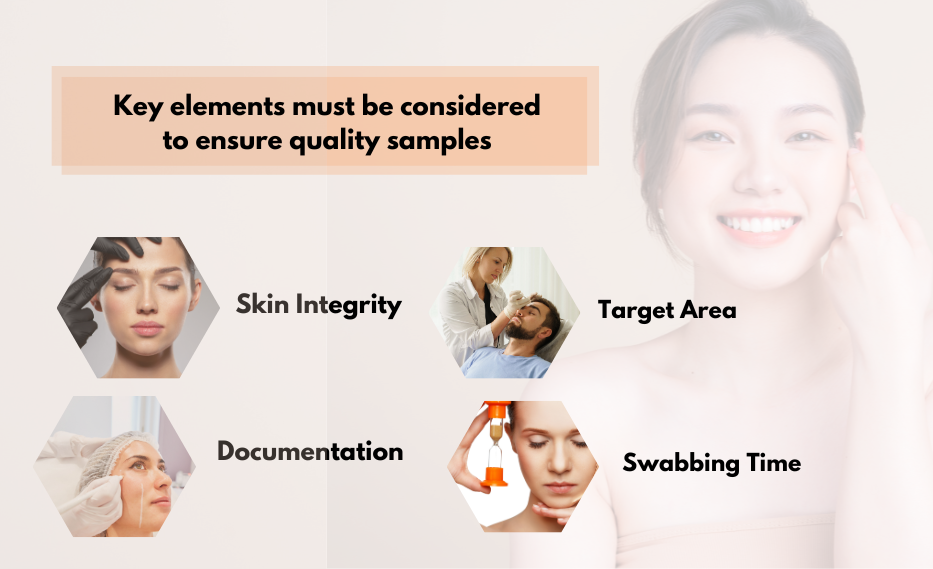
Our skin is home to millions of microorganisms which play an important role in the innate and adaptive cutaneous immune system and the overall maintenance of our skin barrier. Dysbiosis has been shown to be associated with many skin diseases. Having a better understanding of the skin microbiome to allow dysbiosis reversal is critical for the development of new skin disease therapies. Integrating skin microbiome sample collection in clinical trials is a great opportunity to assess the impact of changes in microflora on skin disease state. Skin microbiome sampling can be a simple and quick process, however the following key elements must be considered to ensure quality samples*:

1. Skin Integrity
Protecting the integrity of the skin’s surface area is paramount!
Undisturbed skin surface of the area of interest should be the number one concern when skin microbiome sampling.
- The precautions begin with ensuring the subject has been properly trained on the said requirements for study visit days. The requirements will be specific to the study design, for example the subject should not touch the area of interest during the study visit, prior to the microbiome sample collection as it could alter the skin microbial communities. The subject could simply rub their skin surface before the sampling, and it could potentially greatly affect the readability of the data collection. This precaution is critical to the sample collection process because contrarily to the gut microbiome, the skin’s microbiome is present in smaller quantity thus reducing the available area for the sample collection.
- Therefore, wearing gloves when identifying the different areas of sample collections and measurements should be implemented to protect the integrity of the samples.
2. Documentation
Another good practice to keep in mind is to always document the different areas used for the sample collections. The process can be done by using schematics and skin landmarks such as beauty spots or noticeable skin irregularities. This is important when we want to capture a change through time and minimize background noise in sample analyses.
3. Target Area
To ensure consistency in sample collection, it is important to describe the surface area to be swabbed. Always refer to manufacturers’ requirements when using commercial systems for sample collections. It is critical that all sites use the same surface area.
4. Swabbing Time
How to take a skin swab? When performing sample collection through swabbing, it is important to precise the time of swabbing to ensure consistency and, more importantly, that sufficient material is collected. Always refer to manufacturer requirement when using commercial systems for sample collections. HOT TIP: midway through swabbing time, flip the swab so that the whole swab has come into contact with the skin surface. This will maximize skin surface material absorption on the flock.
Once the sample collection is completed, ALWAYS refer to manufacturer requirements for storage. Many commercial systems have long stability periods at room temperature, and some require special processing for freezer storage. It’s better to read twice than assume and lose the precious material. To conclude, remember to always refer to study specific instructions for the target lesion criteria, specifications on surface area of sample collection, time points at which samples are collected, and finally, storage/processing requirements. Always keep in mind skin surface integrity: make sure to perform study activities in an order that will allow microbiome sample collection on untouched skin.



